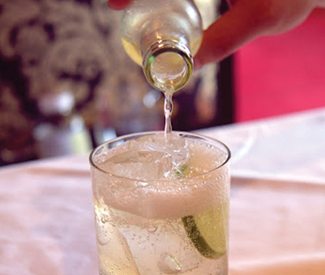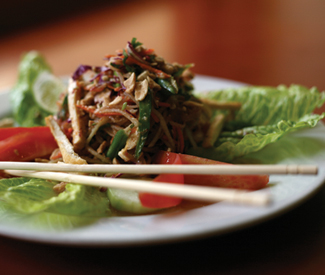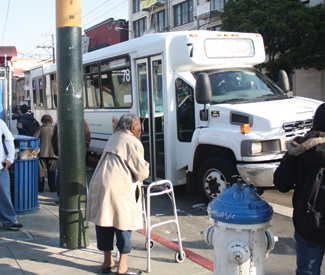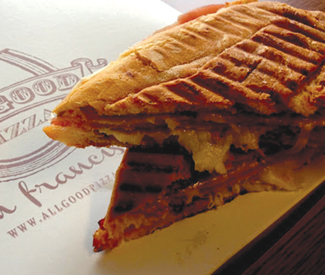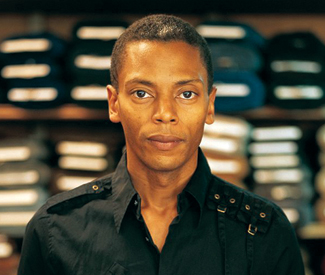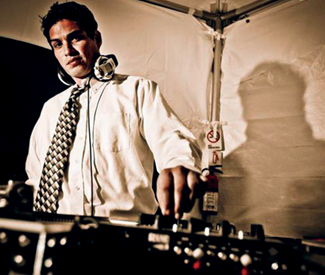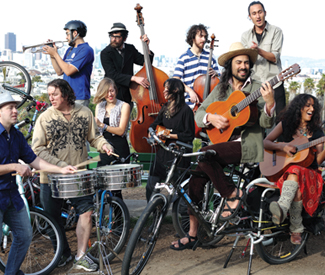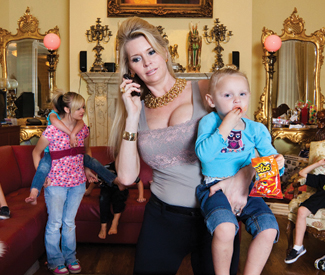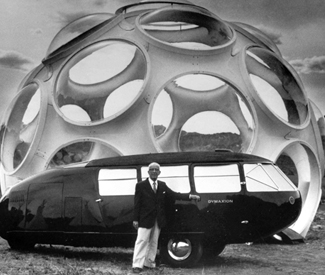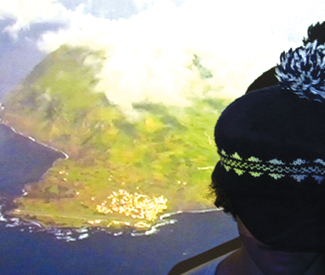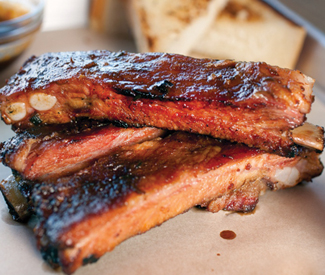Spring imparts new life and lush green after winter rains. It also ushers in a glut of new cocktail menus, emphasizing the best produce of the season and exciting new trends.
BOTTLED COCKTAILS
These are sprouting up everywhere, including at the newest addition to the Bourbon & Branch family, the 1950s-styled Local Edition (691 Market, SF. www.localeditionsf.com), which opened April 12. There is no carbonation in these blends, just sophisticated, straightforward bottlings that utilize house syrups to drive flavor profile. Instead of individual-sized bottles, bar manager Ian Scalzo opts for 750-milliliter bottles that he corks and seals in-house. Order a large bottle of rum infused with house made yerba maté syrup — some come with a shot of sparkling wine, or soda — or avail yourself to tableside decanter service as you enjoy live music in this spacious, underground bar.
At Harry Denton’s Starlight Room (450 Powell, SF. (415) 395-8595, www.harrydenton.com) bar manager Joel Teitelbaum created a carbonated line-up at $12 per bottle, with even more in the works. Clear spirits dominate this bottled cocktail menu, which just launched April 10, but don’t be surprised if brown liqueur shows up too. Teitelbaum is already working on a Bulleit Rye cocktail for bottling. Try a carbonated Negroni made lively with Campari, Plymouth gin, and sweet vermouth, or a Phizzed Phosphate daiquiri of white rum perked up with cane sugar, phosphate, citric acid, and distilled lime juice.
You read that right, distilled juice. Citrus can easily turn bitter and pungent during distillation, but with lots of experimentation (and failed batches) using various juices, Teitelbaum has cornered a subtle lime aroma that blends seamlessly into his bottled daiquiri, mojito, and Brokers gin-based gin and tonic — my favorite of the bunch. His homemade tonic is a light brown, a natural result from leaving in the cinchona bark filtered out of most tonics. The drink gives off a floral, cardamom aroma, and the distilled lime juice tastes here of kaffir lime. Cutting-edge bars like The Aviary in Chicago are also experimenting with high concept bottled cocktails, but Teitelbaum is going for approachable, crowd-pleasing classics — with a twist.
PIMM’S CUP REVIVAL
Pimm’s Cups are on the rise. For those unfamiliar, the English brand Pimm’s has a full lineup of spirits, but its most-popular Pimm’s No. 1 is a gin-based, rosy red liqueur with notes of citrus and spice. In addition to Pimm’s, the famous cocktail made from the spirit can include lemon and cucumber, even gin, ginger ale, 7-Up, soda water, or mint. It’s a boozy cucumber lemonade for grown-ups that typically comes generously garnished — a drink that is as visually pleasing as it is to taste.
Pimm’s Cups are staples in London, even offered as a morning imbibement at farmers markets. In New Orleans, the drink is a tradition at 1700s bar Napoleon House (even if the version served is less than exemplary), a welcome treat in muggy Nola heat.
I wouldn’t mind seeing more Pimm’s traditions in our own city, but it seems we’re on our way. I’ve long gotten my Pimm’s Cup fix at 15 Romolo (15 Romolo, SF. (415) 398-1359, www.15romolo.com), which makes a lovely version with your choice of liquor (“anything but scotch,” reads the menu), plus Pimm’s, cucumber, mint, lemon, house ginger syrup, bitters, and soda water. Get the from-scratch treatment at Heaven’s Dog (1148 Mission, SF. (415) 863-6008, www.heavensdog.com) next month when new bar manager Trevor Easter makes a fresh batch of gin-based, housemade Pimm’s liqueur from bar director Erik Adkins’ recipe. With this base, the two craft a gorgeous drink, lively with cucumber and lemon.
Jasper’s Corner Tap (401 Taylor, SF. (415) 775-7979, www.jasperscornertap.com) bar manager Kevin Diedrich just started bottling his own Pimm’s Cup. A vivid orange, it goes down bright and bold with cucumber, ginger, lemon, Pimm’s, soda, and the no-longer-secret ingredient: a hint of fresh strawberry. Diedrich’s little bottled beauties border on addictive. I wish I could stock them at home.
WINE COCKTAILS
Sampling through spring menus I’ve noticed this old trend getting fresh life. At Wo Hing (584 Valencia, SF. (415) 552-2510, www.wohinggeneralstore.com), bar manager Brooke Arthur’s new spring cocktails include a Cynar spritzer made from the Italian artichoke liqueur and Plymouth Gin, alongside Punt e Mes vermouth, cava, orange bitters, lemon peel, and a pinch of salt. This dark, earthy, red refresher is blissfully bitter, bright, and invigorating. The salt enhances flavors, the bubbles impart texture.
Kevin Diedrich at Jasper’s Corner Tap created a St. Helena fizz served tall in a Collins glass. This wine-based cocktail is blessedly light on the alcohol — perfect for a mid-day imbibing. It uses Newton Chardonnay, St. Germain elderflower, Benedictine, Peychaud’s bitters, Bitter Truth grapefruit bitters, and soda. It’s like a mini-escape to wine country.
Kate Bolton of Maven (598 Haight, SF. (415) 829-7982, www.maven-sf.com) created a unique wine aperitif in Global Warming. Dry riesling features, but also sake, even a splash of Ransom’s Old Tom gin. Tart with lemon, a little scoop of absinthe sorbet permeates the drink as it melts. Who says vino and hard alcohol don’t mix?

